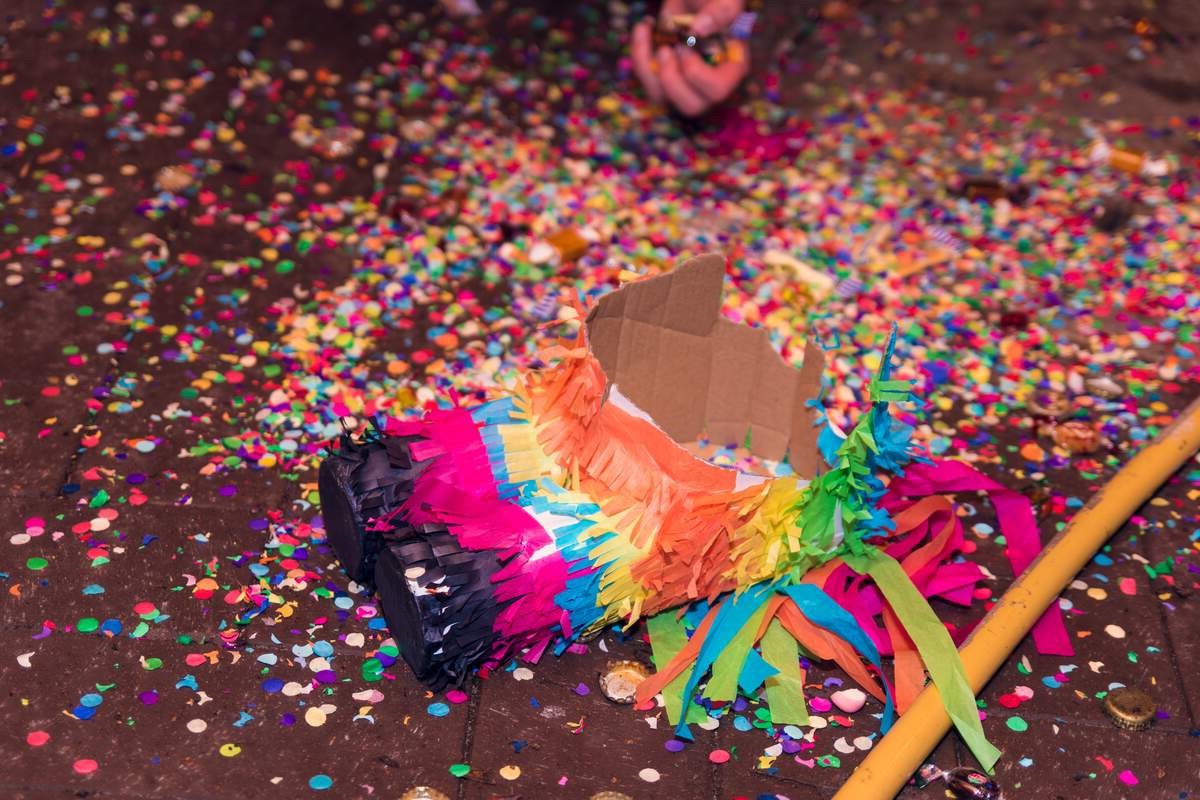
Ever wondered why we get to smash colorful creations filled with sweets and treats on National Piñata Day? Well, April 18th marks a day dedicated to celebrating the vibrant and fun tradition of piñatas, a staple at parties and celebrations around the globe. But, what's the story behind these festive decorations, and how did they become such a hit? From their historical roots to modern-day variations, piñatas are more than just a game. They're a symbol of joy, culture, and the spirit of celebration. So, grab a stick, and let's crack open the fascinating world of piñatas. Ready to uncover some surprising facts about this beloved tradition?
Key Takeaways:
- National Piñata Day on April 18th celebrates the colorful and festive piñata, bringing friends and family together for fun and sweet surprises. It originated in China and gained religious significance in Europe before becoming a staple in Mexican celebrations.
- Celebrate National Piñata Day by making your own piñata, hosting a piñata party, or sharing piñata stories on social media. Piñatas are not just for Christmas in Mexico; they are also popular at birthday parties, weddings, and other celebrations.
What is National Piñata Day?
National Piñata Day, celebrated every April 18th, is a day dedicated to the colorful and festive piñata, a symbol of celebration and joy in many cultures. This day encourages people to engage in the traditional fun of breaking piñatas at parties and gatherings, bringing together friends and family for a moment of excitement and sweet surprises.
Origins of the Piñata
-
The origin of piñatas can be traced back to China, where Marco Polo discovered figures of animals covered in colored paper used during the New Year's celebrations. These figures, filled with seeds, were broken as part of the festivities, and the tradition eventually made its way to Europe.
-
In Europe, particularly in Spain, the piñata adopted a religious significance and was used during Lenten celebrations. By the 16th century, Spanish missionaries brought piñatas to Mexico as a tool for religious instruction, where they were embraced and transformed by local traditions.
Piñatas in Mexican Culture
-
In Mexico, piñatas became an integral part of the Las Posadas celebrations, which occur during the Christmas season. Traditionally, these piñatas are star-shaped with seven points, each point representing one of the seven deadly sins, and the act of breaking the piñata symbolizes the triumph of virtue over sin.
-
Piñatas are not just for Christmas in Mexico. They are a staple at birthday parties, weddings, and other celebrations, often taking the form of animals, characters, or other fanciful shapes.
How to Celebrate National Piñata Day
-
Making your own piñata is a popular way to celebrate National Piñata Day. This activity allows for creativity and personalization, making the celebration even more special.
-
Hosting a piñata party is another great way to observe the day. Invite friends and family over for a festive gathering where everyone gets a chance to take a swing at a piñata.
-
Sharing piñata stories and photos on social media using the hashtag #NationalPiñataDay helps spread the joy and fun of piñatas far and wide, connecting people across different regions and cultures.
Fun Facts about Piñatas
-
The largest piñata ever recorded was created in Philadelphia in 2008. It was nearly 60 feet tall and resembled a donkey.
-
Piñatas traditionally were made with a clay pot base, but modern piñatas often use cardboard or papier-mâché for safety and ease of breaking.
-
The word "piñata" is derived from the Italian word "pignatta," meaning "fragile pot," reflecting the item's breakable nature.
-
In some cultures, piñatas are filled not only with candy but also with fruits, toys, and sometimes even small amounts of money, making the scramble to collect the fallen treasures even more exciting.
-
Piñatas have become a global phenomenon, with variations of the tradition appearing in countries around the world, each adding their unique twist to the practice.
Celebrating the Colorful Tradition
National Piñata Day, celebrated on April 18th, is more than just a day for smashing colorful creations; it's a vibrant testament to rich cultural traditions and the joy they bring into our lives. From its historical roots in China, transported across continents by explorers like Marco Polo, to its significant role in Mexican celebrations, the piñata embodies a fascinating blend of history, culture, and festivity. Whether you're crafting a piñata at home or participating in a community event, this day offers a unique opportunity to connect with others through shared traditions and create unforgettable memories. So, grab some paper, paste, and get ready to add a splash of color and excitement to your April celebrations. Let's keep the spirit of National Piñata Day alive, spreading joy and unity one smash at a time.
Frequently Asked Questions
Was this page helpful?
Our commitment to delivering trustworthy and engaging content is at the heart of what we do. Each fact on our site is contributed by real users like you, bringing a wealth of diverse insights and information. To ensure the highest standards of accuracy and reliability, our dedicated editors meticulously review each submission. This process guarantees that the facts we share are not only fascinating but also credible. Trust in our commitment to quality and authenticity as you explore and learn with us.
